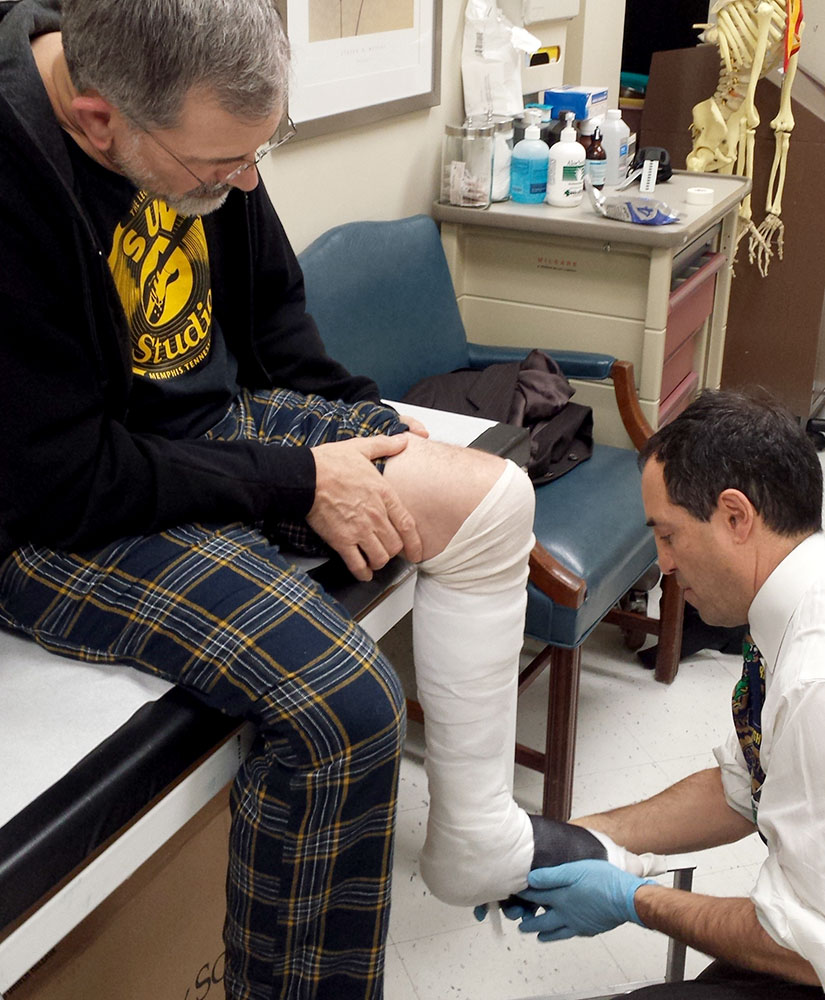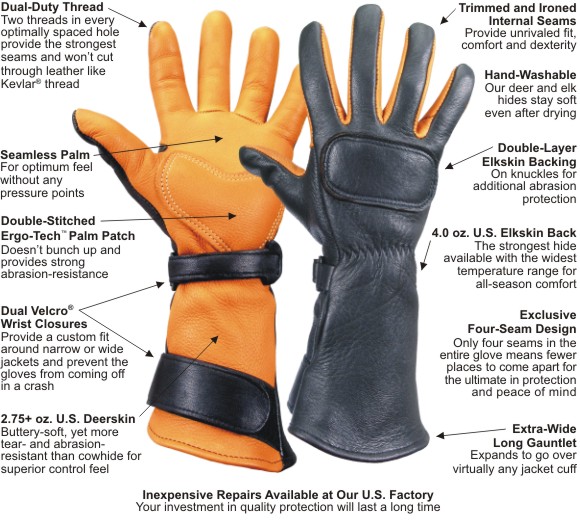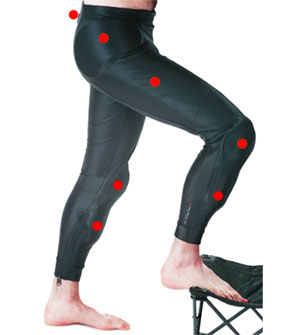What body part is most likely to be injured in a motorcycle accident?
December 25, 2013Dr. Romano (Rocky) building my first of three, post-surgery casts.
A post-surgery x-ray showing the plate and screws required to repair my broken left ankle.
Alpinestars waterproof motorcycle boots
Me in my Shoei GT-Air helmet.
I wear these Lee Parks Design gloves and really like them. Lee Parks is the author of the Total Control Advanced Riding Clinic that I have benefitted from.
I wear these Bohn Armor pants under my Kevlar jeans or riding pants.
Naturally this topic caught my attention as I was scrolling through my “Moto” Facebook posts this morning. It’s an article posted on the Ride Apart website, a site I am growing increasingly fond of because of their wealth of useful content for motorcyclists.
Ride Apart Article by Wes Siler: What Body Parts Will You Most Likely Injure In A Motorcycle Crash?
The common perception, at least in the US (I think), is that the answer to this question would be head and neck injuries. I think this perception is due in part to the controversy over the “helmet law” issue, which varies from state to state. It seems that head injuries are what most people talk about and are aware of.
It turns out that the CDC data indicates 22% of the most common motorcycle crash injuries do occur to the head and neck areas. What is surprising is that 30% of all non-fatal motorcycle injuries happen to the legs and feet!
My personal experience bears this statistic out. I had my first motorcycle accident on November 19, 2013, and I broke my ankle. The article is full of many data sources (global), and talks about how the data was correlated and interpreted. I recommend that all motorcyclists read it and alter their riding behavior accordingly.
What Can Motorcycle Riders Learn From This Article?
I agree with the author, Wes Siler, that the most surprising data is the prominence of leg and foot injuries. Wes writes:
“Among the small portion of motorcycle riders who actually take advantage of safety gear, these are the least likely areas to be equipped with real protection. Is this data a reflection of that fact or is it simply indicative of just how exposed our feet and legs are? Regardless, seriously protective boots, pants and armor are widely available and, anecdotally, are extremely effective at preventing foot and leg injuries.”
Foot & Leg Protection
My Conclusion #1: Invest in high-quality motorcycle boots that cover the shin, and riding pants that are armored, especially from the knees down. Be in the minority of riders who wear protective gear and don’t let any part of your tibia/fibula go unprotected.
Wes continues:
“At the same time, we can see that injuries to the lower extremities are unlikely to result in death. Overwhelmingly, according to the NHTSA, that is caused by a head injury, regardless of helmet use. That highlights the importance of wearing a quality, full-face helmet that’s less than five years old and fits properly; the glue used to bond layers of the EPS absorption material deteriorates beyond that time and poorly-fitting helmets can come loose in an impact, potentially failing to provide any protection or, worse, exacerbating injuries.”
Wear a Helmet
My Conclusion #2: Invest in a high-quality, high safety rated motorcycle helmet and wear it all the time!
Wes continues again:
Injuries to the upper body are also common, but easily preventable. Virtually all motorcycle specific jackets incorporate shoulder armor, while protection for the back and chest is an easy add-on.
Wear Body Armor
My Conclusion #3: Invest in a high-quality, high safety rated motorcycle jacket, with built-in shoulder, elbow, back and chest armor.
Again from Wes:
Next up are arm and hand injuries — those Radius and Ulna breaks. I’ve experienced more than my fair share of those, despite always wearing quality protection spanning my hands and arms. What I’ve learned that is effective, at least in some crashes that typically result in these injuries, are palm sliders. Those prevent your hands from “grabbing” the road, thereby turning direct impacts that would otherwise send forces straight up your arms into shearing forces that don’t break bones.
Get Good Gloves
My Conclusion #4: Invest in high quality, high safety rated gloves that cover hands and wrists. Consider palm sliders as a key and necessary feature.
Finally Wes writes:
Hips and pelvic bones are pretty strong — reflected in the infrequency of their breaks — and also hard to protect against. That doesn’t mean you can’t do so, just that a full riding suit may be required, one that incorporates substantial armor around the hips, coccyx and pelvis. Padded under shorts — which will not fit under jeans — provide similar protection.
Wear Hip & Tailbone Armor
My Conclusion #5: I agree that investing in additional body armor to protect the hips, pelvis and tail bone is well worth it! I wear Bohn Body Armor Adventure Pants under my riding jeans or riding pants.
I agree with Wes’ final takeaway:
“I guess what the real takeaway here is that major, life-altering injuries can occur anywhere on your body. But, it is easy to reduce the severity of them with quality, protective motorcycle gear. Hopefully this information helps you make the kind of decisions that could save your life, or at least your ankles.”
ATGATT
My Conclusion #6: After investing in all of these types of safety and protection gear, become an avid ATGATT rider: All The Gear All The Time!
My personal experience convinces me that my November 19, 2013 injuries would have been much more severe had I not been practicing ATGATT. Even though I did sustain a broken ankle (due to the full weight of my bike landing on it because it somehow got caught in the footpeg and frame), I received no other injuries whatsoever. I did not even get sore wrists, arms, shoulders, head and neck, back, pelvis or upper legs due to the fall. This was truly amazing to me and has increased my commitment to practicing ATGATT.







